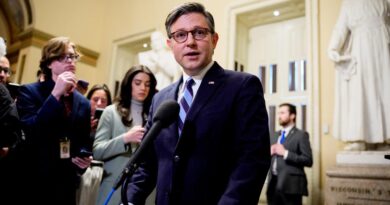NYC’s New Scaffolding Regulations: A Positive Step Forward

If you think the city’s latest regulations, aimed at reducing the number of sidewalk scaffolds, will successfully eliminate these unsightly structures, let’s take a walkthrough together.
Observe that Saks Fifth Avenue’s lengthy shed is painted white, Carnegie Hall’s is red, and Burberry’s recently removed structure was blue.
So what, you may ask?
Well, the newly passed scaffold regulations by the City Council will permit “more color options” compared to the old rule that mandated the use of “ugly hunter green,” as council member Keith Powers, a key supporter of the changes, mentioned.
But hold on! Sidewalk sheds have displayed a spectrum of colors beyond green for years, some due to unusual “exemptions,” while others for no discernible reason.
If the new legislation is so disconnected from a visible issue evident to over 16 million people in the Big Apple, how credible can we consider the other purportedly transformative rule modifications?
Credit goes to Powers and fellow council member Erik Bottcher for confronting the scaffold issue more directly than Mayor Adams did with his mostly verbal “Get Sheds Down” initiative last year.
However, the potential repercussions on the obscure scaffold-rental sector remind one of Iago’s remark when Othello’s sword failed to finish him: “I bleed, sir, but not killed.”
Modifying the rules may eventually eliminate a few awkward structures here and there. Yet, the city’s uniquely extensive scaffold problem won’t vanish unless infamous Local Law 11, which mandates inspections for all buildings over six stories every five years regardless of any associated risks, is entirely repealed.
Despite numerous city “crackdowns,” about 8,500 sheds remain, only slightly fewer than the previous year.
Even with the recent legislation (which has been signed by Adams), heavily scaffolded areas like West End Avenue, much of Flatiron, and Downtown Brooklyn are likely to remain just as plagued by these crime-inducing, business-harming steel jungles two years from now as they are today.
The sheds will still extend 20 feet in both directions from the building being repaired, darkening the doors and windows of apartment buildings, shops, and restaurants that aren’t even undergoing inspections — one of the previous law’s most detrimental impacts that the new regulations fail to address.
Take it from someone who has covered this issue for years and is well aware of the unaccountable practices within the Department of Buildings. This office is all too eager to overlook serious violations while creating a facade of municipal oversight over the multi-billion-dollar scaffold industry.
You’ve heard of the “deep state?” The DOB is part of the deep city — a web of municipal agencies that follow their own agendas and sustain their bureaucracies irrespective of what the mayor, the council, or the courts assert.
The DOB has even established a ridiculous spin-off business — inspections of the sheds themselves, often delegated to the same contractors who built them.
Under the new regulations, newly constructed buildings won’t require their first inspections for nine years. That’s a positive step. However, for all other structures, guess what! Although the uniform five-year inspection requirement has been thankfully abolished, it’s left to the DOB to decide the timing.
Powers’ spokesperson Emma Johnson clarified, “All buildings [except for new ones] will have inspection cycles ranging from six to twelve years, which will be decided by the DOB.” (Italics ours.)
How and when will the agency make such determinations for our million buildings, even if it were to act in good faith? And when its many managers, inspectors, engineers, and consultants rely on “enforcement” for their livelihoods?
Landlords are required to renew applications for sheds every three months instead of annually, or face fines of up to $6,000 monthly. Yet for many large landlords, $72,000 a year is still small change compared to the expenses of facade repairs that often seem to take an eternity.
New York could learn a thing or two from Chicago. Despite that city’s own issues, it has largely avoided the steel-and-wood monstrosities, even with the nation’s second-largest concentration of tall buildings.
This is because its inspection protocol intelligently categorizes buildings into four distinct groups based on their age, materials, and conditions. The group considered safest requires inspections only every twelve years.
Of course, such a sensible easing of requirements would lead to less revenue for the scaffold vendors in the Big Apple.
Countless landlords and construction executives suspect mob involvement in the scaffold industry. They prefer to keep their names confidential as they value their own safety.
Prosecutors should heed their concerns. And City Hall ought to repeal the bad law that has plunged much of the “world’s greatest city” into darkness.
scuozzo@nypost.com



